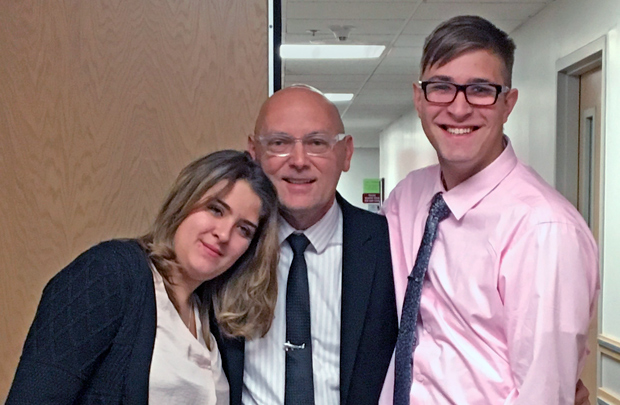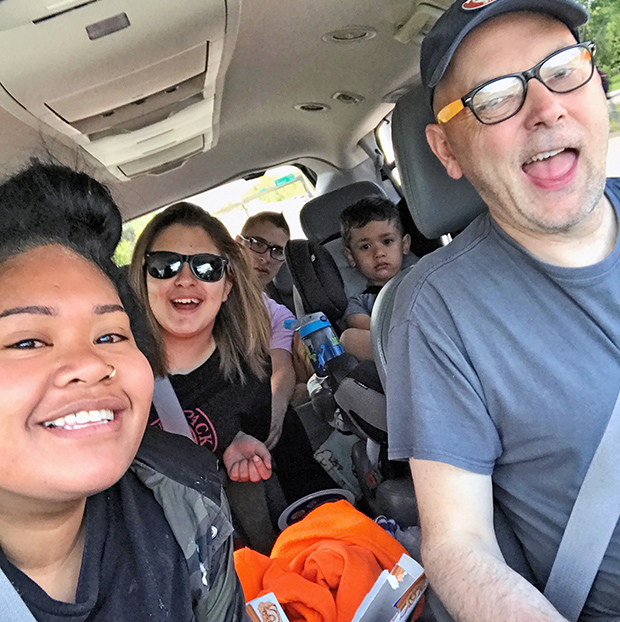
Tim Young was single, approaching 60, and facing an empty nest when his daughter suggested that he adopt from foster care.
“I said, no way! They won’t let an old, single guy adopt a child! Luckily, my daughter succeeded in convincing me otherwise.”
Less than a week later, Tim contacted his local Department of Health and Human Services and started the process of getting licensed to foster and adopt. He told his worker that he was interested in adopting a sibling group of older children. And he started watching videos on the website of The Reel Hope Project, an organization that makes videos of Minnesota children who are waiting to be adopted.
It didn’t take Tim long to watch all of the videos on the site and narrow his search down to six sibling groups. At the top of his list were Summer and Raymond, a brother and sister with special needs. He asked his daughter, Maddee, to watch the videos on the site without telling her which children he was considering. Summer and Raymond were at the top of Maddee’s list, too.
“I don’t know what it was about them. To be honest, in the video, they scared me a little bit. They were playing charades, bowling, and visiting a coffee shop. In those settings, they seemed kind of hyper! But I still felt a connection with them,” Tim said.

Tim’s worker moved forward with his inquiries, and Summer and Raymond’s caseworker responded quickly. It wasn’t long before Tim was meeting with their social workers, CASA volunteer, and others who knew Summer and Raymond well to learn more.
“In those early conversations, it felt like I was hearing all of the negatives—detailed descriptions of their disabilities and of every problem they’d ever had in the past. At some point, I asked the people around the table: Are you trying to scare me away? Because where some people see obstacles, I see challenges,” Tim said.
The professionals were not the only ones pointing out the pitfalls Tim might encounter. While his children were supportive, his parents and friends his age were skeptical—even fearful—about his plan to adopt older children.
“People said: ‘Don’t adopt teenagers. You don’t know what you’re going to get.’ I said, actually, it’s the opposite! I can look at them and talk to them. I know exactly what I’m getting,” Tim said.
Jumping through the hoops toward adoption
Tim’s inquiry progressed from learning about the children to a first meeting and then visits. Tim credits the children’s caseworker for both making sure he understood what it meant to adopt teens with special needs and “holding his hand throughout the process.”
Summer and Raymond moved into Tim’s house in December 2018, and in October 2019, it was official: Tim adopted Raymond and became a permanent legal guardian to Summer (who a judge ruled could not legally consent to her own adoption because of her intellectual disability).
Tim says that the last year has been one of the best of his life—and he is grateful to the social workers and family members who made this phase of life possible.
“I see a lot of people my age sitting in front of TV, having cocktails, complaining about aches and pains. Not me! I still feel like a young person. People say that having kids will either age you or keep you young! In my case, it’s the latter,” Tim said.
He just turned 60, but Tim hopes that his days of fostering and adopting are far from over.
“My only regret about aging is that I have less time to adopt kids and spend time with them. If I could live another 60 years, I would keep adopting the whole time.”
Watch a video of Tim, Summer, and Raymond made by The Reel Hope Project.
As Tim’s story demonstrates, you don’t have to be young or married to adopt from foster care. Read about the characteristics of successful parents on our website.